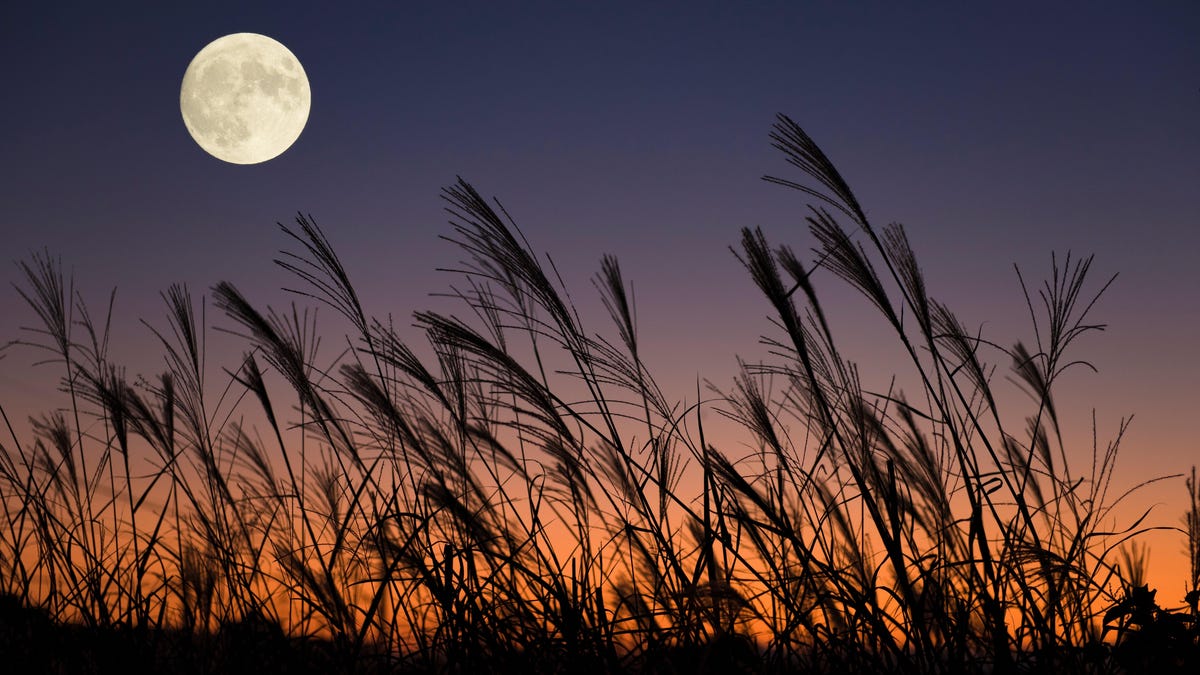
September’s full moon, called the “Harvest Moon,” will be at its fullest and brightest on the morning of Sept. 10, despite rising on the night of Sept. 9. The Harvest Moon reaches its peak illumination just before dawn, at 5:58 a.m. Eastern Time on the 10th, right before it sinks below the horizon.
Why is it called the Harvest Moon?
Full moons don’t have official names, but “Harvest Moon” is as good a name as any. The moniker comes from the fact that this is the full moon that rises closest to the fall equinox, which is also peak fall harvest time. This year, the autumnal equinox is on Sept. 22, so the harvest moon is in September, but some years it comes as late as October.
The harvest moon rises soon after sunset for several nights in a row, providing a couple extra hours of light for agrarian folks to harvest their crops at night. Through the year, on average, the moon rises about 50 minutes after the sun sets, but around the equinox, the “lag time” between sunset and moonrise is only about 25 minutes in most of the United States. The further north you are, the less time elapses between sunset and moonrise. In parts of Canada, the full moon is up as soon as 10 minutes after sunset.
Other names for September’s moon
Most of our moon names are actually names of the months used by Native Americans, and different groups had different monikers for September’s moon. They mostly share the common themes of “hey, summer is over.” The Dakota call September “Corn Harvest Moon,” and the Western Abenaki call it “Corn Maker Moon.” The Lakota call it “Moon of Brown Leave,“ and the Anishinaabe call it “Leaves Turning Moon.”
Amazing moon fact: Art on the moon
We’ve left about a half million pounds of detritus on the moon—food wrappers, tools, abandoned vehicles, golf balls, etc.—but we’ve also left behind a museum. The brainchild of sculptor Forrest “Frosty” Myers, the Moon Museum is a tiny rectangular ceramic wafer three-quarters wide by one-half inch high. It contains artwork from Robert Rauschenberg, David Novros, John Chamberlain, Claes Oldenburg, Forrest Myers, and Andy Warhol. Warhol’s line drawing might be a rocket, or a stylized version of his initials, but it looks like a penis to me. So there’s basically a dick pic on the moon.
The Moon Museum was never officially sanctioned by NASA—they were reportedly interested enough to talk to Myers, but not interested enough to give the go-ahead—so Myers contacted an engineer working on the Apollo 12 lunar module, and he slipped the museum onto the lander that was ultimately left behind on the surface. The existence of the project was only revealed after the mission was over.
Belgian painter and printmaker Paul Van Hoeydonck has an “official” sculpture on the moon. The much more respectful Fallen Astronaut is a 3.5-inch (8.9 cm) aluminum sculpture of an astronaut, meant as a tribute to the people who died to advance the science of space travel. It was placed on the lunar surface by the crew of Apollo 15 in 1971, next to a plaque listing the names of 14 deceased astronauts and cosmonauts.
Credit: Source link




